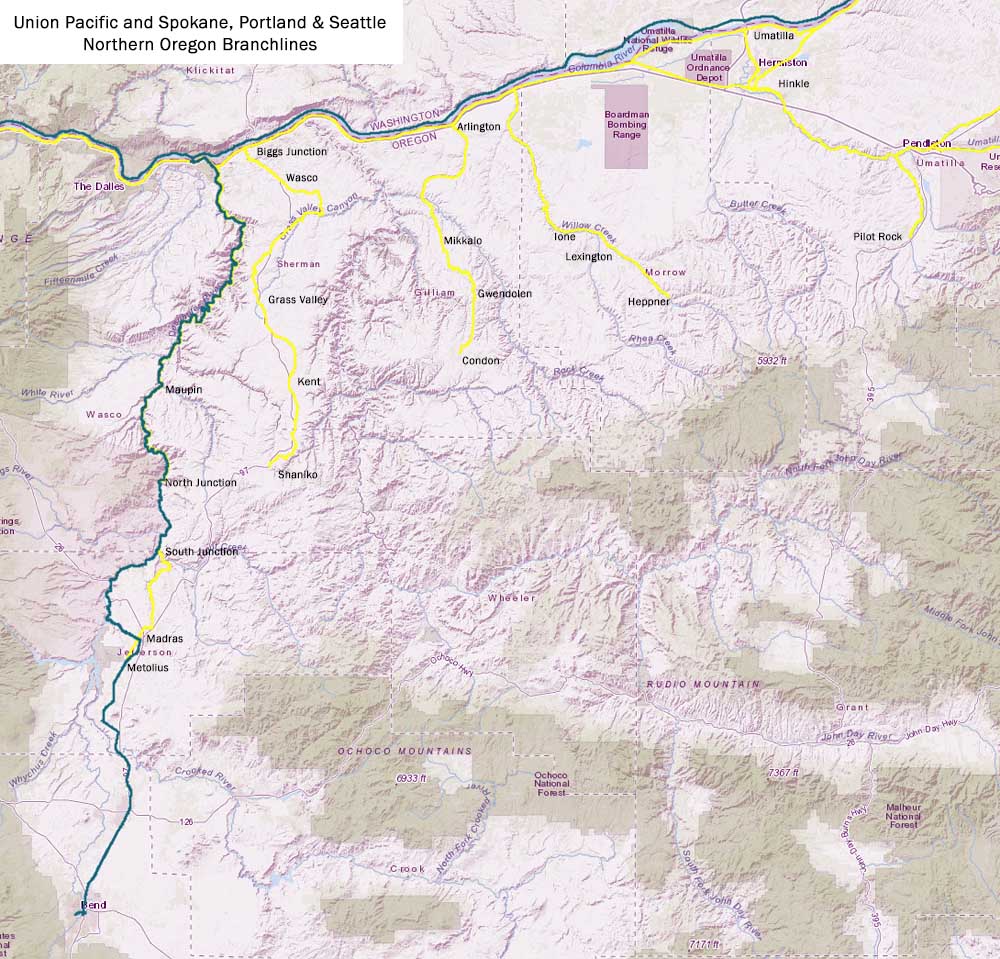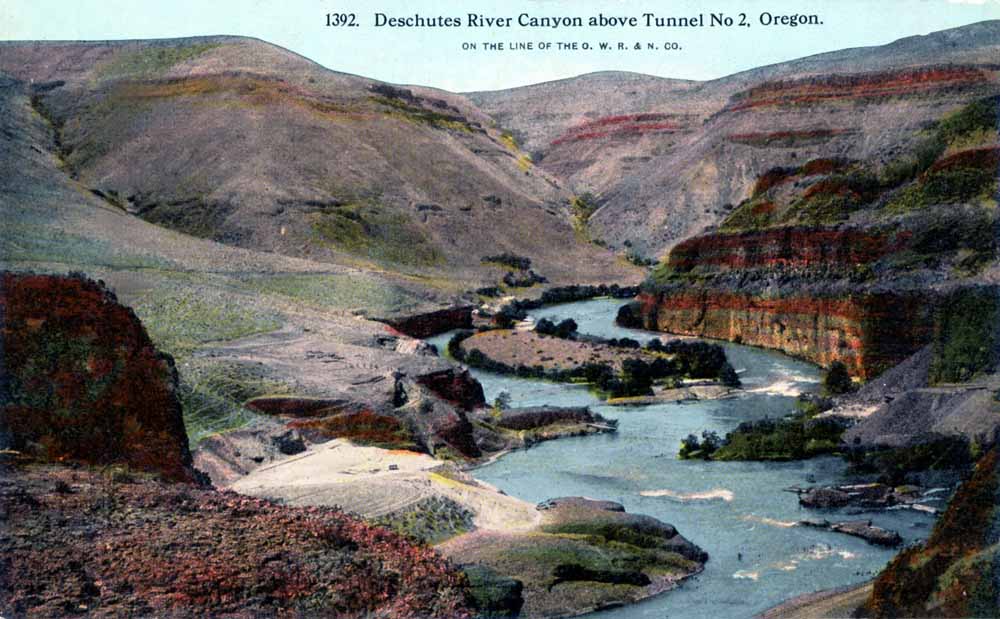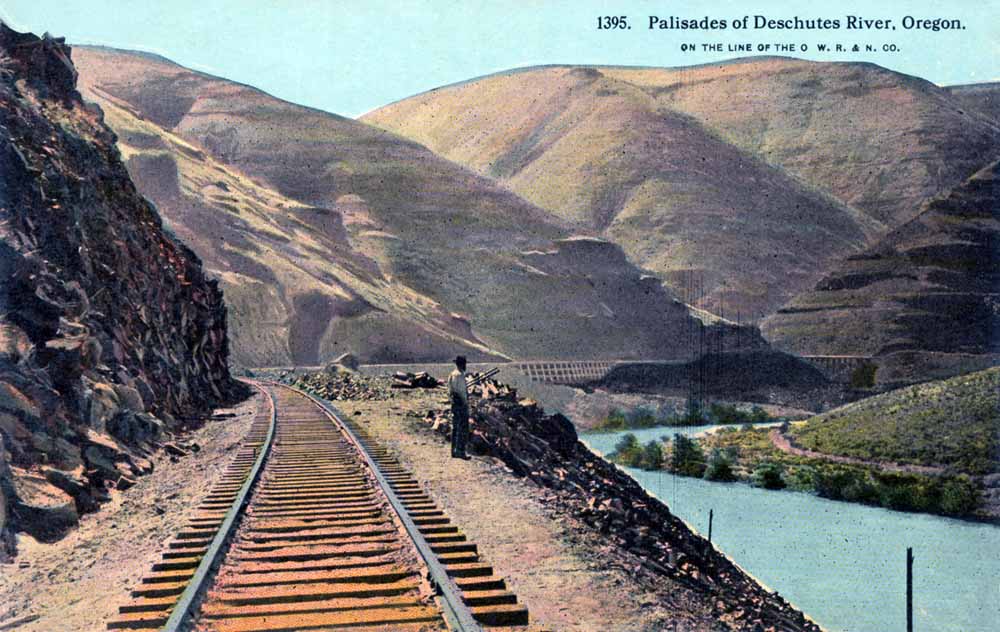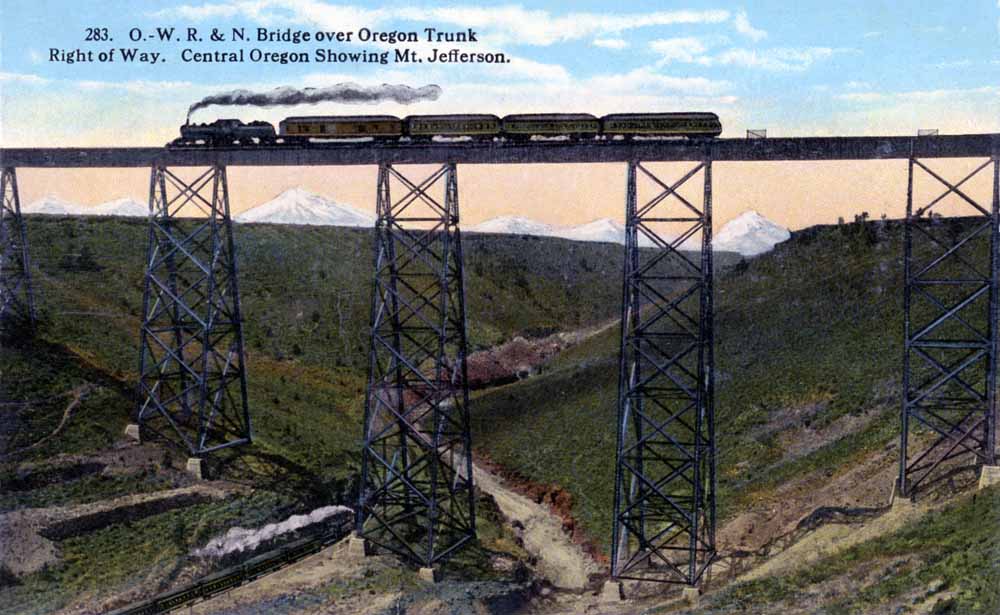|
Union Pacific Des Chutes Railway (Bend Branch) |
|
|
|
As noted on the BNSF & Predecessors section of this website, both Edward Henry Harriman of the Union Pacific and James J. Hill of the Great Northern had their eyes on central Oregon in the years immediately after 1900. Hill's Oregon Trunk and Harriman's Des Chutes started blasting parallel railroads up opposite banks of the Deschutes River in the summer of 1909 while the two parent roads fought in the courts over access routes and conflicting surveys. Harriman's death on 9 September 1909 allowed the two railroads to cool off and negotiate a settlement agreement in 1910. The two railraods ended up with parallel railroads from the mouth of the Deschutes to North Junction, which marked the beginning of a twelve mile stretch of the canyon that was too narrow to allow for both railroads, compounded by the presence of the Warm Springs Indian Reservation on the west bank of the river. Oregon Trunk built and owned the section of the line from North Junction to South Junction, where the two lines again diverged. The two companies again built parallel railroads to Metolius, where UP's construction ended. UP then had full trackage rights over the Oregon Trunk into Bend. When finished the Bend branch consisted of 95.3 miles of UP-owned track, 71.3 miles from the main line connection to North Junction and then 24 miles from South Junction to Metolius, plus 53.1 miles of trackage rights over the Oregon Trunk, the 10.4 miles between North and South Junction and the 42.7 miles from Metolius to Bend. Union Pacific, through its Oregon-Washington Railway & Navigation Company subsidiary, commenced offering regular freight and passenger service over the line, though substantial freight traffic really didn't develop until Brooks-Scanlon and Shevlin-Hixon lumber companies opened their giant sawmills in Bend in 1916. The Oregon Trunk and O-WR&N eventually eliminated the duplicate trackage north of Bend in two transactions. The Oregon Trunk abandoned its line between South Junction and Metolius on 16 August 1923 in favor of trackage rights over the O-WR&N, and then on 28 March 1936 the O-WR&N abandoned its entire line north of North Junction in favor of trackage rights over the Oregon Trunk. In this final agreement UP turned all operation and maintenance responsibility on the entire line over to the Oregon Trunk, though UP continued utilizing trackage rights to reach Bend and otherwise serve the shippers along the line. Union Pacific operations over the Bend Branch gradually withered, especially as many of the sawmills in central Oregon closed between the middle 1990s and early 2000s. UP did get trackage rights over the BNSF line south of Bend and operated a few manifest freights over the line, but gave up on that routing in short order. UP operations to Bend finally ended around 2010, with BNSF agreeing to handle all UP cars still moving to or from shippers on the line on UP's behalf. Union Pacific however still owns the line between South Junction and Metolius. |
|
|
Map
|
|
|
Photos An early postcard graphically illustrating why the initial surveys deemed the Deschutes River Canyon impassable to railroads.  O-WR&N postcard view of the Deschutes River Canyon.  Another early postcard view of the O-WR&N postcard view of the Deschutes River Canyon. The Oregon Trunk is on the far bank.  One more O-WR&N postcard view of the Deschutes River Canyon. The O-WR&N is on the near bank while the Oregon Trunk is on the far bank. Note the O-WR&N tunnel in the middle left of the view.  O-WR&N's impressive viaduct at Madras with an Oregon Trunk train on its line below.  Jerry Lamper shot this image of a UP freight in Bend in the steam era.  UP's local in Bend on 27 May 1995. Keith E. Ardinger photo.  UP's Bend Local switching in Redmond, Oregon, on 29 January 2007, shortly before UP stopped operating the line. Phil Brahms photo. |
|
|